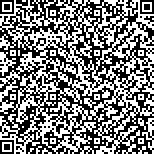Archive > Volume 44 Issue 11 > 2018,44(11):1434-1444. DOI:10.7519/j.issn.1000-0526.2018.11.006 Prev Next
Analysis of Effective Coverage and Terrain Blockage for Next Generation Radar Network Design
- Article
- Figures
- Metrics
- Preview PDF
- Reference
- Related
- Cited by
- Materials
Abstract:
Generally, radar beam blockage caused by terrain remains unchanged for long. Research on the situation of radar terrain blockage is helpful for improving effectiveness and reliability of radar data. By using Advanced Spaceborne Thermal Emission and reflection Radiometer Global Digital Elevation Model (ASTER GDEM) terrain data, the terrain blockage of 208 existing Chinese next generation radar sites is computed. Beam blockage coefficient in a 200 km radius around radar sites is calculated at 9 observation elevation angles of Volume Coverage Pattern (VCP) modes 21. Maps of effective observation region where radar beam is not blocked are drawn while the elevation angle of radar remains at 0.5°, 1.45°, 2.4° and 3.35° respectively. The effectively covered area of radar sites is obtained according to these maps. Calculation result shows that the average blockage ratios of Chinese next generation radars within 200 km at 4 different elevation angles (0.5°, 1.45°, 2.4° and 3.35°) are 30.7%, 8.5%, 2.5% and 1.0% respectively, and the average effectively covered areas are 83210.5, 109354.2, 118170.9 and 121631.5 km2 accordingly. Most of Chinese next generation radar sites can cover the surrounding area effectively as the influence of terrain blockage remains very low except a few sites near mountains.
Keywords:
Project Supported:
Clc Number:


Mobile website









